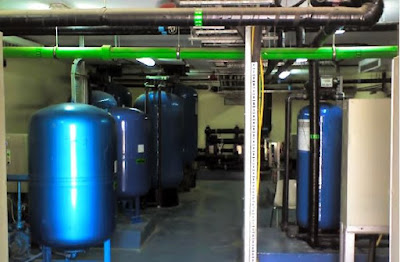What Is IP- Ingress Protection Ratings
We are familiar with some protection symbol in our appliances and equipment as IP- like IP22, IP56, and IP64 so and so. But to most of us it’s not clear, what bearing the meaning is. Most commonly, we feel happy and secured if someone ensure it is waterproof. Similarly we also familiar with Water-tight, Rain-tight, Rain-proof, Dust-tight & Drip-tight etc. that makes our sense easily.
IP is shorten of Ingress Protection or ingress protection rating, sometime says International Protection rating. The letters IP contains two digit numerical number after the letters IP, sometimes one additional letter also uses to describe protection against mechanical impacts.
IP or Ingress protection mainly uses for electrical enclosure or cabinet where electrical or electronic equipment are associated to prevent electrical shock to equipment users and save the equipment from the environment.
IP Ingress Protection Degrees
Sponsored:
Each equipment has its own requirements to fulfil the function properly, but that is not enough all. Along with functional requirement, equipment need some protection from external effect and should be harmless for its operator.
In this context IEC- International Electromechanical Commission provide IP rating to determine the degree of protection for electrical enclosure, against solid objects and liquids.
What is IP Code for Protection?
IP code ratings label the degree of protection an electrical enclosure against the intrusion of foreign objects like solid and water.
IP ratings code normally consists of the letters IP followed by two digits number which specifies the degree of protection.
First digit of IP code specifies the protection against ingress by solid objects, and second digit specifies the protection against ingress by liquids.
Example: IP65
Where,IP = Ingress Protection;6 = Complete protection against contact with live or moving parts inside the enclosure and against the ingress of dust;5 = Water projected by a nozzle against the machine from any direction shall have no harmful effect.
The levels for the first digit vary from 1 to 6 and the second digit 1 to 8. The larger the number means increased degree of protection.
Refer the below table for various IP designations hope will make sense very clear.
First digit after the letters IP, means protection from solid objects:
0 No special protection;1 Protected against solid objects over 50 mm;2 Protected against solid objects over 12 mm;3 Protected against solid objects over 2.5 mm;4 Protected against solid objects over 1 mm;5 Protected against dust limited ingress;6 Totally protected against dust.
Second digit after the letters IP, means protection from liquids:
Sponsored:
0 No protection;1 Protection against vertically falling drops of water;2 Protection against direct sprays of water up to 15 deg from the vertical;3 Protected against direct sprays of water up to 60 deg from the vertical;4 Protection against water sprayed from all directions;5 Protected against low-pressure water jets;6 Protected against high-pressure water jets;7 Protected against the effect of immersion up to 1 m;8 Protects against long periods of immersion under pressure.
From the above IP code we can say the greatest protection level is IP68 which is able to protect against continuous submerged for a longtime.
Technorati Tags: IP Protection,IP Code,IP Ranking,Ingress Protection,Ingress Protection Ratings,Electrical Enclosure Protection














